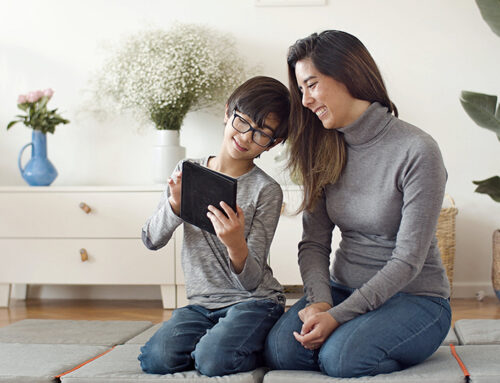Blue Bird Day’s “Sign of the Week” initiative is designed to educate parents, caretakers, family members and anyone interested in signing about how American Sign Language can facilitate communication with children. Speech-Language Pathologists break down common signs that can be easily incorporated within daily routines with a child.
About American Sign Language
Sign language is a system of communication using visual gestures and signs. Think of it as a visual language. For our purposes, we mainly use American Sign Language (ASL). It is important to note that sign language is not a universal language and each country has its own version of visual communication. In ASL, information is conveyed through the shape, placement, and movement of the hands, as well as facial expressions and body movements.

Sign Language Is Useful For All Children
If you are wondering whether sign language is something you should learn with your child, here are some benefits.
When children have a difficult time effectively communicating with others about their wants and needs, they often get frustrated. Frustration can lead to tantrums and meltdowns. Sign language can help avoid these situations by providing your child with an effective way of expressing their wants or needs. Signs are a simple and quick way to understand your child that may not currently have the verbal skills to communicate. That way, you can address what is causing tantrums instead of spending endless time guessing.
Your child can use sign language if they are hungry, want to read more books, or if they need help getting something out of reach. With your child signing to communicate, both parents and children experience less frustration and more time learning and growing together.
Improved language and vocabulary development can also be achieved with the use of sign language. It provides children with a way to communicate with others prior to stringing words together.
When sign language is paired with verbal language (i.e., a model of the word being signed, such as “more”), it provides children with a link between the gesture and the word. In this way, sign language enhances and augments verbal language. Once signing, communication with your child becomes a back-and-forth interaction.
The greatest benefit to using sign language is your child’s ability to communicate with you and your ability to understand them.
When looking to introduce sign language with your child, the most important thing to know is that there is no “right” way to do it. Start by choosing signs that make the most sense within the context of your child’s life and routines. Tune in to our Facebook page to learn the Sign of the Week each week and begin learning signs with your child!
Benefits Of Teaching Sign Language To Your Child
- Increase positive experiences surrounding communication
- Fewer moments of frustration and distress in child
- Less parenting-related stress
- Create a closer bond with your child
- Support verbal language development
- Help parents feel more ‘tuned in’ to their child
- Improve communication between parent and child

Blue Bird Day fosters socialization, sensory regulation, and pre-academic learning in children ages 2-7 years in therapeutic rotations that simulate preschool and kindergarten settings. Our compassionate therapists practice a relationship-based and family-centered approach, provide parent training, and collaborate on goals and individualized intensive treatment plans for your child.
We believe in a collaborative and multi-disciplinary team approach to therapy. A team of occupational therapists, speech-language pathologists, dietitians, developmental therapists, behavioral therapists, physical therapists, and therapeutic assistants are created for each child to ensure child and family are fully supported and the best possible results are achieved.
Options for individualized, group and virtual therapy sessions are available as well.
Want to learn more or you have a specific question? Feel free to connect with us here!



